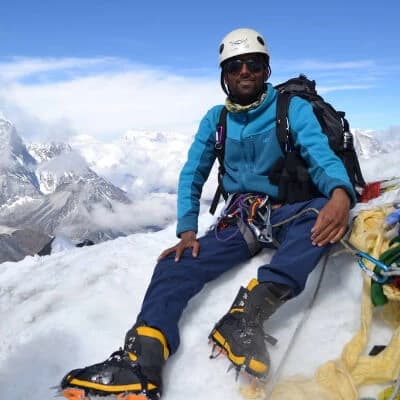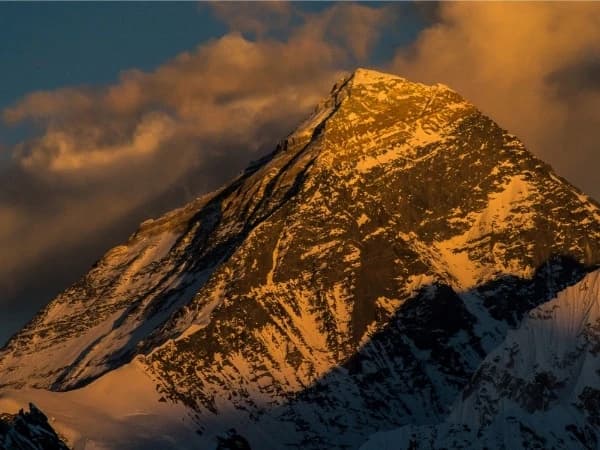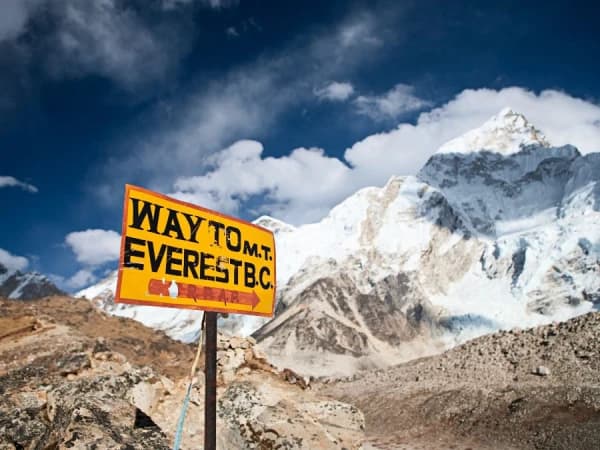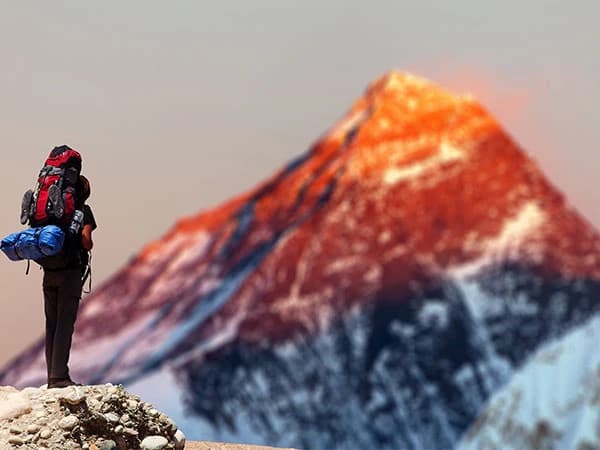Annapurna Circuit Trek Length and Duration
Doing the Annapurna Circuit means taking a full-blown journey that gradually unfolds with every step. This trek will take you across the subtropical valleys to the icy edges of the trans-Himalayan wilderness. Annapurna Circuit Trekking has always been described as one of the most rewarding trekking adventures in the world.
A large part of that experience had to do with its length and the sheer diversity this Himalayan endeavor packs. But, how long is the Annapurna Circuit Trek? And how many days should you manage to take part in this journey?
The answer isn’t fixed; however, the general trekking distance in this circumnavigating journey is approximately 160 to 230 km (99 to 143 miles). As for the length of the trek, it takes about 12 to 22 days to complete. The total length of the trek will depend on the route you choose, trekking pace, side excursion and how well you can handle acclimatization.
The road expansion has reached both parts of the circuit trail, east (up to Chame) and west (up to Muktinath/Jomsom). So, the overall length and trekking distance will now depend on where you wish to start and end your trek.
During the trekking days, you will have to cover a distance of around 10 to 17 km on average. This will be equivalent to walking 6 to 7 hours per day. So, even if the circuit trail doesn’t include any technical parts, you will need a good level of stamina and endurance to comfortably traverse across the rugged mountain terrain.

Altitude and Acclimatization Challenges
Another strong aspect of the Annapurna Circuit Trek Difficulty that you need to be watchful about is the elevation gain. This circuit trek route has consistent, sustained exposure to high altitude. After crossing the mark of 3,000 meters, it gets harder for the body to adapt to thin air conditions with a proper acclimatizing calendar.
The highest point of the Annapurna Circuit elevation is Thorong La Pass, which is situated at an altitude of 5,416 meters (17,770 feet). Elevation gain of this stature, especially in the trans-Himalayan zone, poses both physical and psychological challenges.
Thus, trekkers need to understand how altitude affects the body, what risks they need to look out for during their journey and how to properly structure their itinerary to allow a safe and effective acclimatization.
Destinations along the route, like Manang and Yak Kharka,serve as the vital acclimatization destinations. Spending an extra night and trekking slower at these major transition points allows your body to adapt properly to thinning air.
Still, the most challenging Annapurna Circuit Trek altitude lies at Thorong La Pass, the highest hurdle of this journey. During this hike, many trekkers feel breathless, weak, or dizzy as the ascent takes place pre-dawn.
This high-altitude Himalayan pass truly tests physical fitness and mental grit, demanding respect and careful pacing. So, altitude gain in this journey is not just a number. It's a powerful force that affects your every step and breath.
You need to respect it and plan for it. This way, even the challenging portion of the trek will turn into a manageable and memorable part of the journey.
General Symptoms of Altitude Sickness
- Headache (most common early symptom)
- Nausea or vomiting
- Loss of appetite
- Fatigue or unusual tiredness
- Lightheadedness or dizziness
- Shortness of breath
- Difficulty in sleeping
- Bloating or abdominal discomfort
- Muscle weakness or heaviness
How to Minimize Risk of AMS During Annapurna Circuit Trek?
- Follow a proper itinerary plan with a gradual ascent and enough acclimatization period
- Pace yourself during the trek and avoid overexertion
- Stay hydrated by meeting the daily recommended fluid limit (3 to 4 liters per day)
- Avoid excessive coffee and alcohol during the trek
- Eat a high-carb diet and avoid heavy or greasy meals that can upset your stomach
- Keep an eye on your body language and don’t ignore minor symptoms
- Travel with guides or groups who understand the terrain, weather and how to recognize and deal with AMS
- Use preventive medication if necessary (consult a travel doctor before your trip)

Trail Conditions and Terrain
The Annapurna Circuit Trek difficulty is not just determined by the trek distance; the physical diversity also contributes to the difficulty level. Over the span of 160 to 230 km, the trekking trails transform dramatically.
You will start your journey from the lush river valleys, cross subtropical jungle, traverse across windswept plateaus and finally navigate the glacial moraines. This variation in landscape makes the journey visually appealing.
But it also makes the journey demanding. Understanding the terrain conditions will help trekkers prepare mentally and physically for what lies ahead. You will also be able to minimize risk and make efficient choices when it comes to packing and pacing.
During this iconic Himalayan journey, you will experience steep sections throughout the trip, both uphill and downhill. You will have to overcome relentless climbs in some areas, while others are knee-pounding descents.
You also should expect to cross numerous suspension bridges. Some of these hanging bridges are short and sturdy others are long and swaying over the deep river gorges. Although the suspension bridges are generally safe, they can be a mental challenge for those who have a fear of heights.
In short the Annapurna difficulty is also defined by the dynamic tapestry of terrain in this circuit route. From the green forest to high-altitude arid landscape, the journey demands both physical and mental adaptability to navigate its beauty and challenge.
Weather and Seasonal Difficulty
The Annapurna region wears many faces depending on the season you choose to do this trek in. It may not seem that much of a major factor on the surface. However, the weather elements are the silent game-changer that determines the overall Annapurna Circuit Trek difficulty level.
Trekking in the Himalayas is not just about the distance and altitude. It is also about reading the sky and timing your trek to sync with the mood of the mountains.
Spring (March to May): Stable Weather, Blooming Trails
Spring is one of the best time for Annapurna Circuit Trek. This season features clear skies, moderate temperatures (even at higher altitudes), stunning mountain vistas and blooming landscapes.
Pros:
- Stable weather conditions; low probability of snow or rain
- Excellent mountain visibility
- Lower elevation featuresa blooming landscape with a diverse splash of rhododendrons and other wildflowers
- Lodges are fully operational
Cons:
- Snow may linger at Thorong La Pass during the early part of the season
- Afternoon winds can pick up in the arid region
Autumn (September to November): Peak Season, Peak Conditions
This season is considered the prime season for trekking in Nepal. In autumn, the skies are crystal clear, temperatures are pleasant, routes are well-maintained and the lodges are fully functional.
It is a period when most trekkers are on the trail.
Pros:
- Crisp and dry weather with near-zero rainfall probability
- Breathtaking visibility all the way to the end of the horizon
- Trails are properly maintained and all teahouses are open
- Perfect weather for crossing high-altitude passes like Thorong La when it is snow and ice-free
Cons:
- Has more crowds than any other season
- Dust on the lower Mustang trail due to dry weather
- Cold nights start to settle by late November
Monsoon (June to August): Slippery and Hazardous
Annapurna Circuit Trek difficulty level reaches its peak point during the monsoon season. That’s why this season is not recommended for most. Monsoon brings heavy rainfall, leeches, obscure visibility due to clouds and mist, and frequent landslides and flooding, especially in the lower Marsyangdi Valley.
Yes, the rain shadow area beyond Manag (Upper Mustang and Muktinath side) remains relatively dry. However, getting there safely requires good logistics and planning.
Major Difficulties:
- The stone steps are slippery and the trail is muddy
- Constant rain and mist can affect both visibility and morale
- Landslide risks at the lower part of the trail
- Blood sucking leeches take over the humid forested areas
- The flight and transport disruptions are common due to unstable weather
Winter (December to February): Harsh but Serene
Winter trekking on the Annapurna Circuit can be a serene experience, but it also comes with serious risks. The lower part of the trails, like Chame, Pisang and Manang, are still accessible during the early part of the winter.
However, beyond that, due to snow-covered trails and freezing winds, trekking can be dangerous. The temperatures also plummet to a significant level, so there is also a risk of hypothermia and more severe forms of AMS.
Major Difficulties:
- Heavy snow accumulation on Thorong La Pass, which makes it impossible to pass
- The higher part of the trails is often closed due to unsafe trail conditions
- Extreme night temperatures, which can drop to -25°C
- Many teahouses above Manang are closed down
- Days are short, which requires more flexibility with itinerary plans
- Icy and snow-covered trails increase the risk of frostbite, hypothermia and AMS
Physical Fitness Requirement
Technical climb is not part of the Annapurna Circuit Trek difficulties. However, even if circuit trek is non-technical, don’t underestimate its challenge. It still seriously tests your endurance, stamina and mental resilience.
You don’t need to be an exceptional mountaineer or marathon runner. But you will need to be fit enough to walk 6 to 7 hours per day while following the rugged Annapurna Circuit Trek difficulty map. During some sections, you will have to walk on the uphill trail for hours carrying a backpack.
So what really matters in this trek is consistency over intensity. You don’t need to sprint to the pass to win a gold. But, you will need to keep a steady pace, day after day, on varied terrain, changing weather and a demanding high-altitude route.

What Kind of Fitness Do You Need?
To overcome the physical challenges of Annapurna Circuit Trek difficulty level, you will need a good level of cardiovascular fitness, leg strength, core stability, flexibility and mental resilience. You will not need elite-level conditions, but it's best to prepare for every aspect of the journey.
A minimum trekking period of 3 to 6 weeks can make a huge difference in how you handle the demanding trekking trail. Focus on the above-mentioned factors for the training and you will be able to make your Himalayan adventure both comfortable and memorable.
In addition to those, do not forget to add a weekly day hike with a backpack to your training program. This is the most effective method to understand the steep terrain and practice acclimatization at the same time.
**Note: You don’t need to put in significant hours each day for training. Create a helpful schedule with rest period in between so can have the most effective result without harming your overall health**
Mental and Emotional Resilience
Trekking the Annapurna Circuit is not just a physical journey; it is also a mental and emotional expedition. For over two to three weeks of trek (depending on the chosen itinerary), trekkers have to let go of modern conveniences.
There is no fast food on the mountain, transport, reliable internet, or different modes of entertainment. Instead, the trekkers have to deal with long hours of walking, uncertain weather conditions, basic accommodation, mountain isolation and the slow-burning of energy.
So, if not careful, the slow build-up of mental fatigue can majorly impact the success rate of the trek. There will be moments of self-doubt, especially while traversing the high-altitude zones along the route. On the farthest corner of the mountain, even small things become tests.
The higher you move on the trail, the less control you have. Letting go of this control is a part of the mental shift that is essential to overcoming the mentally draining part of the Annapurna Circuit Trek difficulties.
But the flip side of this mental demand also has its own set of rewards. In return for testing your mental fortitude, the Himalayas gifts you clarity and the silence of a high-altitude destination will help you reconnect with things that really matter in life.
You will witness the unfolding of your breath, your grit and your ability to endure discomfort and will still feel grateful. The emotional transformation in this Himalayan journey is as real as any mountain view.
Mental Preparation Tips
One of the smartest ways to optimize the Annapurna Circuit Trek difficulty is to prepare your mind before even stepping on the trail. Here is how you can train your mind to match the mountains:
- Train your mind and visualize your journey, picture not just positive factors but also demanding aspects of the journey like long days, cold mornings and fatigue
- Accept the uncontrollable factors, prepare yourself mentally, remembering that flexibility is strength
- Daily breathing routines or short mindfulness sessions can help you strengthen your focus and calm down during stressful situations
- Set micro goals along the way, which will help you keep your mind focused
- Prepare for discomfort and expect low days when your energy, mood, or motivation dips
- Mentally rehearse the difficult scenarios of the trek, as it helps to reduce the fear when the moment comes
- Surround yourself with positive stories and people who fuel your mindset
Logistical and Support Considerations
Although there is no secret ingredient to suddenly overcome the Annapurna Circuit Trek difficulties, the logistical and support will have a massive impact on the journey. Depending on how you structure your support, the same trail can feel manageable or overwhelming.
There are several things that you to consider before taking up this mountain route. Are you carrying all your gear? Navigating alone? Booking as you move along the trail or doing a pre-arranged trek? These factors will determine how comfortable and enjoyable your trek will be.
Hiring an experienced guide comes with several benefits. For instance, the guide will take care of navigation, permits and logistics. They will also provide valuable information, local insights and language support during the trek. As expert on mountain terrain, they provide motivation and take care of you in case of altitude sickness or other kinds of emergencies.
Similarly, a porter is another valuable member of the support team who carries your heavy gear during the trek. The average porter's load is around 20 to 25 kg (44 to 55 lbs). A single porter can be shared among two trekkers.
As they take care of heavy equipment, you can trek longer without exhaustion, conserve energy for major altitude change segments and explore the mountain route without major knee or back stress.
So, the Annapurna Circuit Trek difficulty is not just all about physical strength. It is also about how well you plan. Many trekkers who struggle or quit mid-way don’t fail because of fitness; they fail because they were unprepared logistically.

**Note: For the high-altitude trekking journey, the logistical awareness is performance power. The better your logistics system, the more energy and resilience you preserve for the part that truly matters, whether it's crossing Thorong La, immersing in local culture and pushing your mental edge**
Who Should or Shouldn’t Do Annapurna Circuit Trek?
The Annapurna Circuit Trek may not be only for elite or exceptional hikers, but it's not like a walk in the park either. This circuit trekking journey demands a commitment to the mountain, discomfort and transformation.
Some people thrive in this journey, meanwhile others find it overwhelming. The key to preparing for the Annapurna Circuit Trek difficulties lies in understanding which camp you fall into.
Who Should Do the Annapurna Circuit Trek?
- Trekkers with moderate to good fitness; it is essential to walk multiple days with an average clock time of 6 to 7 hours per day
- First-time trekkers who don’t mind pre-trip training and have altitude awareness
- Hikers seeking a deep experience that combines cultural immersion, mountain stillness and a sense of accomplishment overcoming physical and mental boundaries
- Senior trekkers who value a slow and steady journey over a fast and flashy one
- Group trekkers or couples who are looking for a shared adventure
- Backpackers and budget-conscious adventurers who are seeking a high-value journey without breaking the bank
- Nature lovers who want variety and vastness, a diverse ecosystem in a single itinerary plan
Who Should Probably Avoid It?
- Anyone who is unprepared for altitude or unwilling to follow the acclimatization schedule
- Trekkers with no physical conditions or endurance preparation
- People who are looking for a comfort-first holiday
- Travelers with medical conditions or no clearance
- Families with very young children or elderly members without proper support
- Those who are not willing to respect local culture and communities










